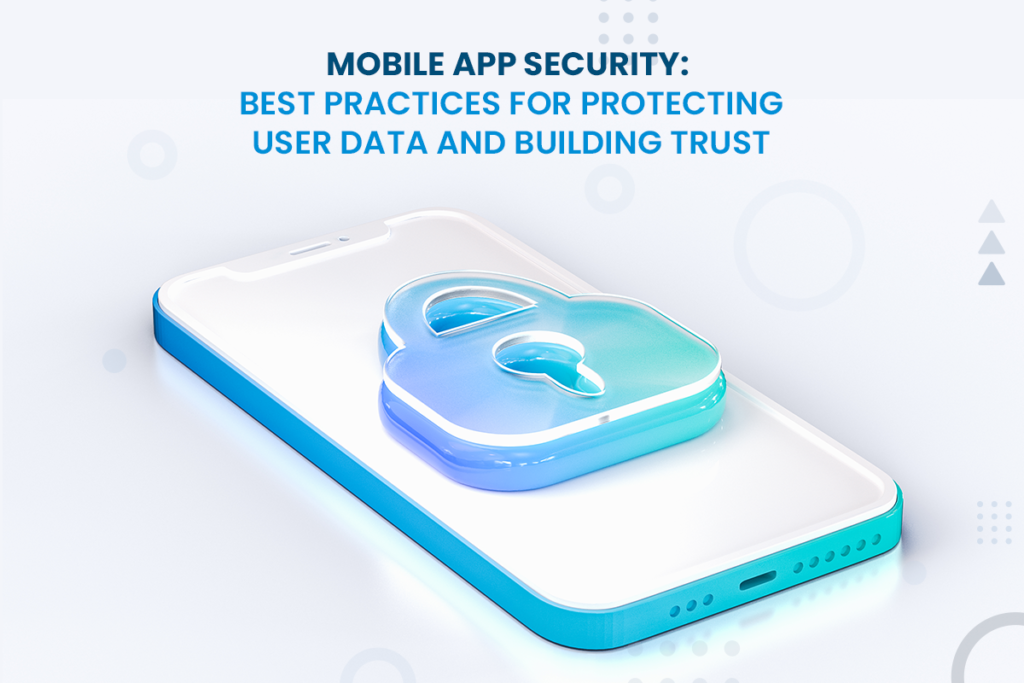
Mobile App Security: Best Practices for Protecting User Data
Introduction:
In an increasingly connected world, mobile app security has become a critical concern for app developers and users alike. Protecting user data and maintaining robust security measures not only safeguards user privacy but also builds trust and credibility. This article explores best practices for mobile app security, providing insights into protecting user data, implementing security features, and fostering a secure environment to ensure user trust and app success.
I. Understanding Mobile App Security
- Importance of Mobile App Security
- Recognize the significance of mobile app security in maintaining user trust and mitigating potential risks associated with data breaches, unauthorized access, or malicious activities.
- Common Mobile App Security Threats:
- Familiarize yourself with common mobile app security threats, such as data leaks, insecure data storage, insecure communication channels, malicious code injection, and unauthorized access.
II. Secure Data Storage and Transmission
- Encrypting User Data
- Utilize encryption techniques to secure user data both at rest and during transmission. Implement industry-standard encryption algorithms to protect sensitive information from unauthorized access.
- Secure Backend Systems
- Ensure that your app’s backend systems, such as databases or servers, employ robust security measures. Regularly update software, patch vulnerabilities, and implement strong access controls.
- Securing Network Communication
- Implement secure communication protocols, such as HTTPS, for data transmission between the app and backend systems. Avoid transmitting sensitive information over insecure channels, such as unsecured Wi-Fi networks.
III. Authentication and Authorization
- Implement Strong Authentication Mechanisms
- Incorporate secure and multi-factor authentication mechanisms, such as biometric authentication, two-factor authentication (2FA), or one-time passwords (OTPs). These measures prevent unauthorized access to user accounts.
- Authorization and Access Controls:
- Implement granular access controls within your app to ensure that users have appropriate access privileges based on their roles and permissions. Regularly review and update access permissions as necessary.
IV. Secure Code Development
- Follow Secure Coding Practices
- Adhere to secure coding practices to minimize the risk of vulnerabilities. This includes input validation, proper error handling, secure session management, and regular code reviews.
- Regular Security Testing
- Conduct regular security testing, such as penetration testing or vulnerability assessments, to identify and address potential security flaws in your app. Fix vulnerabilities promptly to prevent exploitation.
V. Privacy Policy and User Consent
- Transparent Privacy Policy
- Create a clear and concise privacy policy that outlines how user data is collected, stored, and used. Ensure compliance with relevant data protection regulations and clearly communicate your app’s data handling practices.
- Obtain Informed User Consent:
- Seek informed consent from users regarding data collection, usage, and sharing practices. Implement mechanisms to obtain explicit consent, and provide options for users to control their privacy settings.
VI. User Education and Communication
- Security-related User Education
- Educate users about best practices for mobile app security, such as choosing strong passwords, avoiding suspicious links or downloads, and keeping their devices and apps updated.
- Transparent Communication:
- Establish channels of communication with users to address their security concerns or inquiries. Proactively communicate security updates, patches, or incidents to maintain transparency and trust.
VII. Regular Security Updates
- Timely App Updates:
- Regularly release app updates that include security patches, bug fixes, and vulnerability patches. Promptly address security vulnerabilities to ensure the ongoing protection of user data.
- User Notifications and Reminder
- Notify users about the importance of updating their apps and devices. Send reminders and alerts to prompt users to install the latest security updates.
VIII. Compliance with Data Protection Regulation
- Stay Abreast of Data Protection Regulations
- Familiarize yourself with data protection regulations relevant to your app’s operating region. Ensure compliance with laws such as the General Data Protection Regulation (GDPR) or the California Consumer Privacy Act (CCPA).
- Privacy-by-Design Approach
- Implement privacy-by-design principles, embedding privacy and security measures into the app’s architecture and development process. Prioritize user privacy and data protection from the inception of your app.
Conclusion:
Mobile app security is a fundamental aspect of app development, enabling the protection of user data and fostering trust. By implementing secure data storage and transmission, robust authentication and authorization mechanisms, secure code development practices, transparent privacy policies, user education, regular security updates, and compliance with data protection regulations, you can build a secure environment that safeguards user data and establishes a strong foundation of trust with your app users.
Please feel free to Contact Us in case you need any guidance regarding your app marketing needs.




0